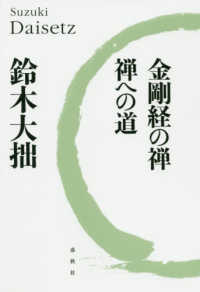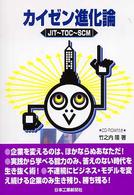Full Description
Drawing on unpublished archival sources, this book reconstitutes the experiences of a wide range of American artists, critics, and writers working in Rome in a charged environment of "Cold War cosmopolitanism."
After the Second World War, American artists flocked to Rome in record numbers, even as the United States shored up Italy as a bulwark against the spread of Communism. While the market for modern art in Rome was less vigorous as those in Paris and New York, numerous galleries, artist-run spaces, and other institutions acted as important catalysts, making Rome an international artistic hub. The city attracted now canonical figures Lee Bontecou, Philip Guston, Robert Rauschenberg, Paul Thek, and Cy Twombly, along with less well-known artists, such as Eugene Berman, Gene Charlton, Carlyle Brown, Peter Chinni, William Congdon, Claire Falkenstein, Marcia Hafif, John Heliker, James Leong, Beverly Pepper, and Laura Ziegler, among many others.
Rather than focusing on institutions and diplomatic relationships, the book centres the experience of artists, and also addresses Rome's gay subculture and the role of female artists during the period, eschewing traditional narratives of the male "cultural ambassador." Through case-study based investigation, Peter Benson Miller explores the reciprocal relationships between American modernist artists and Italian artists in postwar Rome, and reveals how these artists perceived Rome as less constrained by the demands of a national school, and as an alternative to New York. This congenial creative atmosphere yielded "new pictorial forms" developed in tandem with or absorbed from like-minded Italian artists, engaging the city and its multiple layers of history, from antiquity to the profound trauma inflicted by the recent conflict.
The book also establishes the entangled social networks, galleries, exhibitions, and institutions sustaining their work and providing entrée into local artistic circles. Focusing on a series of specific exchanges, this study contributes to our understanding American modernism in an international context.
Contents
List of Plates
List of Figures
Acknowledgements
Abbreviations
1. Introduction
2. The Left Bank of the Tiber: Americans in Rome
3. The Great Collage: Eleanor Clark, Eugene Berman and the postwar Viaggio in Italia
4. Adventurers: The Rome-New York Art Foundation, 1957-61
5. A New Pictorial Form
6. Eggheads: Carlyle Brown, Corrado Cagli, Pavel Tchelitchew, and Mutations of Surrealism
7. Conflicting Loyalties: Philip Guston, Piero Dorazio, and Abstraction Between Rome and New York
8. Extremities: Paul Thek
Appendix: American Artists Living or Traveling in Postwar Italy
Notes
Index







